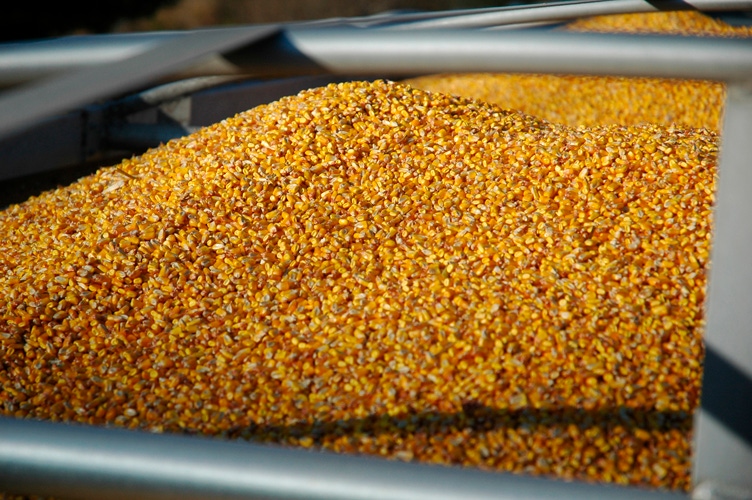February 8, 2011

Three weeks ago, Darrel Good, a University of Illinois agricultural economist, assessed the corn and soybean consumption rate and concluded that corn consumption was progressing too rapidly based on available supplies. Soybean consumption appeared to have slowed enough so that further rationing was not required.
“Since that assessment, the cash price of corn in central Illinois has increased by 22¢ and soybean prices are up 25¢. The higher soybean prices have resulted from a 3% increase in soybean oil prices. The average cash price of soybean meal in central Illinois has declined by $7.70/ton, or about 2%,” says Good.
Following is an update of the likely pace of consumption. For the 2010-2011 marketing year, the USDA projects that 4.9 billion bushels of corn will be used for ethanol production – 7.3% more than used in the previous year. Ethanol production during the first five months of the 2010-2011 marketing year was 15% higher than during the first five months of the previous year, he says.
“The rate of increase slowed modestly in January, but production was still 11% more than in January 2010. There have been reports of a higher-than-average yield of ethanol bushel of corn this year. Even so, corn use for ethanol production is still proceeding well above the projected level,” he says.
Good says that the USDA projects 2010-2011 marketing year corn exports at 1.95 billion bushels, 37 million bushels less than exported last year. Cumulative export inspections through the first 22 weeks of the marketing year were reported at 711 million bushels, 6 million larger than inspections of a year ago.
Through January of the 2009-2010 marketing year, however, cumulative Census Bureau export estimates exceeded inspections by 63 million bushels. Through November of the 2010-2011 marketing year, Census Bureau export estimates were 20 million bushels larger than inspections, he says.
“The difference has increased each month since September, as it did last year. When adjusted for Census Bureau estimates, it appears that exports through January 2011 were likely about 20 million less than those of a year ago,” he adds.
Exports needed
Exports need to average about 41 million bushels/week to reach the USDA projection, up from the average of 33 million so far this year. Unshipped export sales as of Jan. 27, 2011, were about equal to those of a year ago. If the seasonal pattern of exports is similar to that of last year, the current pace is near that needed to reach the USDA projection, Good says.
“The pace of feed and residual use of corn is not measured on a real-time basis. Calculations of consumption relay on the quarterly grain stocks estimates. For the year, the USDA projects feed and residual use of corn at 5.2 billion bushels, 60 million more than use of last year. Use during the first quarter was 88 million larger than that of a year ago,” he says.
The rapid pace of distillers’ grain production should continue to slow the pace of corn feeding, but the 5% increase in the number of cattle on feed at the end of January indicates that the dairy industry is not reducing cow numbers, and the very high hog prices all point to strong feed demand in the near term, he notes.
For soybeans, the USDA projects the 2010-2011 marketing year crush at 1.655 billion bushels, 97 million bushels (5.5%) smaller than the crush of a year earlier. The crush during the first four months of the year totaled 595.7 million bushels, 22.9 million bushels (3.7%) less than in the previous year. The crush in the last month of that four-month period (December 2010) was down 11.6% year over year, Good says.
“Both soybean meal and soybean oil consumption slowed in December. Soybean meal exports and export sales are currently running well behind the pace projected by the USDA. Soybean oil exports and sales are stronger than projected, but domestic use of soybean oil for biodiesel production is down sharply. Use during the first three months of the marketing year totaled only 226.2 million pounds, down 69% from use of a year ago,” he says.
To reach the USDA projection for the year, the rate of use will have to increase from the current pace of 75 million pounds/month to 300 million pounds/month through September. The renewal of the blender’s tax credit beginning January 1 will help, but consumption will likely fall short of the USDA projection, he says.
The USDA projects that soybean exports during the current marketing year will total 1.59 billion bushels, 89 million more than exported last year. Export inspections through the first 22 weeks of the marketing year were 29 million larger than those of a year earlier, he says.
“Adjusting for the difference between inspections and Census Bureau export estimates last year compared to this year, the pace of exports is likely very near that of a year ago. Unshipped sales as of Jan. 27, 2011, however, totaled 458 million bushels, a third larger than outstanding sales last year. The large outstanding sales suggest that the USDA projection can be reached,” Good says.
According to him, the conclusion is much the same as it was three weeks ago. Corn use is likely progressing more rapidly than projected, and the pace of soybean consumption has slowed to that projected by the USDA.
You May Also Like




